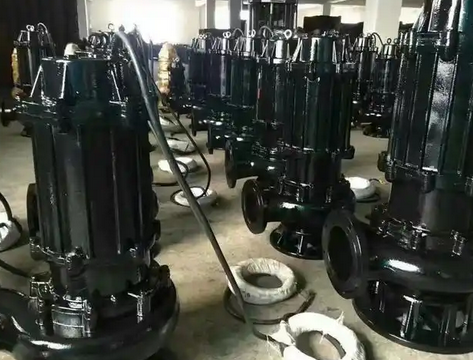Sewage pump troubleshooting and treatment
Sewage pump troubleshooting and treatment are key steps to ensure the normal operation of the pump and extend its service life. The following is a detailed summary of common sewage pump faults and their troubleshooting and treatment methods:
1. The sewage pump cannot start or is difficult to start
Troubleshooting:
Check whether the power supply is normal and confirm that there is no open circuit or short circuit.
Check whether the motor winding is broken or has poor contact.
Check whether the pump rotor or bearing is stuck, and try to turn the pump rotor by hand to determine the flexibility.
Treatment method:
Repair or replace the damaged power line.
Repair or replace the motor winding.
Clean or replace the stuck pump bearing to ensure that the pump rotor rotates flexibly.
2. Reduced flow or reduced pressure
Troubleshooting:
Check whether the sewage pump inlet is blocked, including the filter and pipe.
Check whether the impeller is damaged, such as cracks or notches.
Check whether there is leakage caused by debris or wear inside the pump body.
Treatment method:
Clean the blockage at the water inlet and clean the filter regularly.
Replace the damaged impeller to ensure the efficient operation of the pump.
Repair the leaking points inside the pump body and replace the damaged seals.
3. Abnormal sound
Troubleshooting:
Check whether the pump shaft and bearings are worn and listen for abnormal sounds.
Check whether the mechanical seals are damaged, causing leakage and noise.
Check whether the connection between the pump body and the motor is loose.
Treatment method:
Replace the worn pump shaft and bearings to ensure the smooth operation of the pump.
Replace the damaged mechanical seals to prevent leakage and noise.
Tighten the connecting bolts between the pump body and the motor to ensure a firm connection.
4. Water leakage
Troubleshooting:
Check whether the pump seals are damaged or aged.
Check whether the pipe connections are loose or damaged.
Check whether the pump housing has cracks or leaks caused by wear.
Treatment method:
Replace the damaged seals to ensure the sealing of the pump.
Tighten the pipe connections and repair or replace the damaged pipes.
Replace the damaged pump housing to ensure the overall integrity of the pump.
5. Motor overheating
Troubleshooting:
Check whether the motor is overloaded and the load is too large.
Check whether the motor bearings are damaged, resulting in increased friction.
Check whether the medium temperature in the pump is too high, affecting the heat dissipation of the motor.
Treatment method:
Reduce the motor load to avoid overload operation.
Replace damaged motor bearings to reduce friction and heat generation.
Take cooling measures, such as increasing the amount of cooling water, to reduce the medium temperature in the pump.





